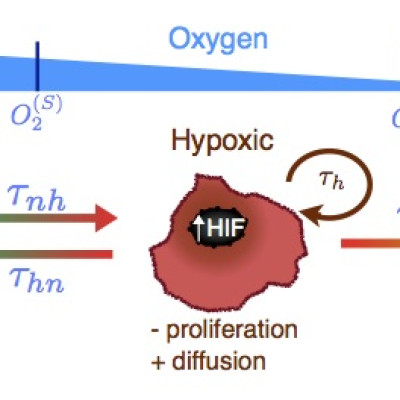Publication
Combined therapies of antithrombotics and antioxidants delay in silico brain tumors progression
A. Martínez-González, M. Durán-Pardo, G.F. Calvo, F.J. Alcaín, L.A. Pérez-Romasanta, V.M. Pérez-García
Mathematical Medicine and Biology 32, 239-262 (2015)
MOLAB authors
Abstract
Glioblastoma multiforme is a rapidly evolving and spatially heterogeneous high-grade astrocytoma that presents areas of necrosis, hypercellularity and microvascular hyperplasia. The aberrant vasculature leads to hypoxic areas and results in an increase of the oxidative stress selecting for more invasive tumor cell phenotypes. In our study we assay in silico different therapeutic approaches which combine antithrom- botics, antioxidants and standard radiotherapy. To do so, we have developed a biocomputational model of glioblastoma multiforme that incorporates the spatio-temporal interplay among two glioma cell phe- notypes corresponding to oxygenated and hypoxic cells, a necrotic core and the local vasculature whose response evolves with tumor progression. Our numerical simulations predict that suitable combinations of antithrombotics and antioxidants may diminish, in a synergetic way, oxidative stress and the subse- quent hypoxic response. This novel therapeutical strategy, with potentially low or no toxicity, might reduce tumor invasion and further sensitize glioblastoma multiforme to conventional radiotherapy or other cytotoxic agents, hopefully increasing median patient overall survival time.














